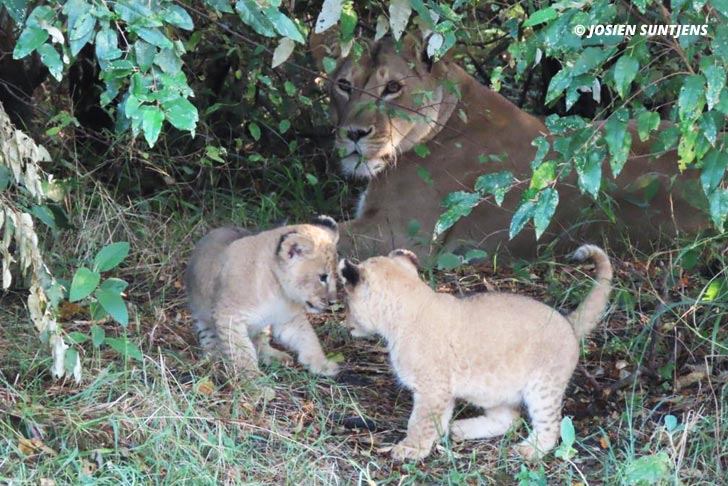Hide and Seek
A female kudu sneaks stealthily through the bushes. Again and again she looks around as if to make sure that no one is watching her. Carefully, she puts one hoof in front of the other, always twitching her nose to detect even the slightest scent, always turning her ears in different directions to pick up every sound, no matter how gentle. When she feels safe, she takes the last steps to a very specific place where she is already eagerly awaited.

By Stefanie Rach
While some animals give birth to and raise their offspring sheltered in the family circle, other animal mothers are forced to hide their little ones at first. Only when they have grown bigger and stronger are they introduced to the rest of the family.
This is the case with the greater kudu, an iconic antelope. The cows live in small groups with their offspring. Although everyone in the herd is constantly on the lookout for possible danger, this would not provide enough security for a newborn kudu. In the event of an attack by a predator, the newborn kudu would not be able to keep up with the herd. When the young are born in the middle of the rainy season, they hide in the tall, dense grass. They have no scent and are therefore difficult to detect by predators. After birth, the mother eats the afterbirth to remove all traces. Cows visit their young to feed them until they join the herd after one to three months.
Lionesses also leave their pride to give birth to their cubs in a hiding place in the thicket of the savannah. After a rather short pregnancy of only four months, the lion cubs are born with their eyes closed and completely helpless. To make sure that the cubs do not end up as a meal for birds of prey, snakes and other predators, the mother regularly moves them to new locations. In the hiding place she leaves the young to go hunting every day. After 10 to 15 days, the young start to walk. But it is only after one and a half to two months that the mother introduces her offspring to the pride.
Many antelope species do as the kudu does and give birth to their young away from the herd to protect them from predators. But lionesses have another reason for hiding their cubs: Male lions only accept their own offspring. If there is a change in the leadership of the pride, the mother has to fear that her cubs will be killed. With the death of the cubs, the mother would come back into estrus. Thus, the lions who have taken over the pride could now pass on their own genes.
Incidentally, not only lionesses but also hippos face such a plight. Hippos therefore hide their young deep in the reeds on the shallow bank.
Every problem has a solution, every solution needs support.
The problems we face are urgent, complicated, and resistant to change. Real solutions demand creativity, hard work, and involvement from people like you.

Stay in the know.
Be ready to act.
To keep up to date with our latest news, events, marches,
campaigns and fundraising activities.
